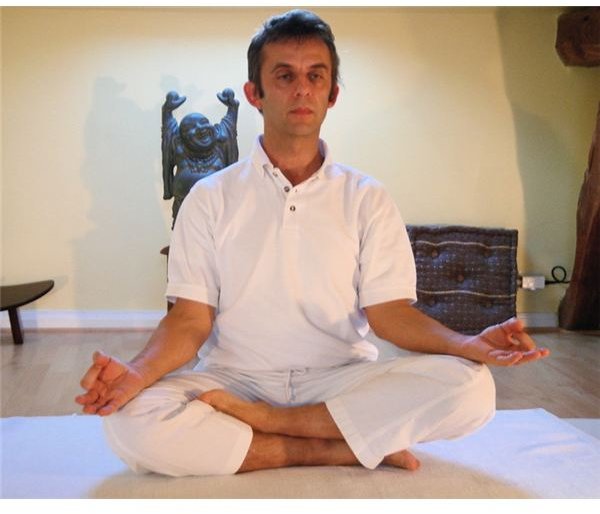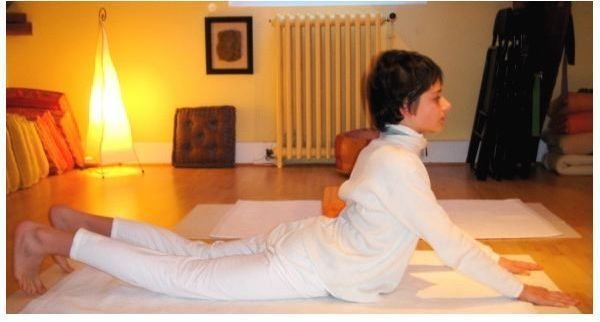Establishing a Yoga Routine Can Help Prevent Long Term Maladies
Welcome to the 2nd part in a 3 part series on yoga for health. In the 1st part of this series, Yoga for Posture and Alignment, we learned how the benefits of yoga extend down our spines and throughout our bodies. In this section we will explore how establishing a yoga routine can prevent stress related maladies by quieting the mind.
The Holistic Self
“The state of our minds and the state of our bodies are intimately linked. If your muscles are relaxed, then your mind must be relaxed. If the mind is anxious, then the body suffers too. (Devananda,2000, p. 23)”
Our bodies are constantly healing themselves. Cuts scab over, broken bones mend, and our center holds. But healing happens only when our bodies are allowed to rest. When we are forever in motion our immunities suffer and our healing processes go on the blink. Yoga is a wonderful meditation that can clear your psyche, steady your breath, and reconnect your body and mind.
Yoga as Breath
Breath is the fundamental source of life. Our respiratory system is more than our lungs. Breath passes through our nasal cavity, through the nasal and oral parts of our pharynx, through our trachea and to our bronchi, and, finally, to our lungs. Yoga stretches such as the Cobra Pose (see below) provide a gentle opening stretch to our complete respiratory system.
Poses such as the Corps, Cobra, and The Half Lotus (see below) provide a quite rest for the mind while placing focus on the relationship between breath and the oxygen that provides us with life. Each pose represents our connection with the earth and with ourselves and bringing this connection into your practice will give it a grounding awareness that goes beyond physical well being.
To make your yoga practice as meditative as possible, remember to breath deeply and fully with each pose. Bring air in through your nose and feel it travel down your throat as it fills your lungs. Allow your stomach to rise up as your body fills with air. Exhale through your mouth while making a light sound of release. Allow each breath to fill you with fresh, clear energy and expel the knots and stresses of the day with each breath out.
Yoga as Daily Meditation
Although our days can seem packed with to many things to do and not enough hours to do them in, our minds need time to rest. While sleep provides a large amount of the rest our minds need, we must recharge and learn to be still throughout the day.
Daily yoga for meditation need not be elaborate. Consider opening and closing your day with a moment of quiet reflection. Stretch your spine with the Mountain and Triangle Poses after you brush your teeth or fall asleep in the relaxing Corpse Pose and take full advantage of breaks throughout the day by performing the Front Bend Pose (see below).
Resources
Marshal, Clyde, M.D., and Lazier, Edgar, Ph.D. An Introduction to Human Anatomy. W.B. Saunders Company. 1964
Devananda, Vishnu. The Sivananda Companion to Yoga: A Complete Guide to the Physical Postures, Breathing Exercises, Diet, Relaxation, and Meditation Techniques of Yoga. Simon & Schuster. 2000
Poses
Yoga as Breath
“The Cobra Pose” - Lay on your stomach. Stretch your feet to your head and your head to you feet. Grab your feet with your hands and hold. Go only as far back as comfortable and hold for as long as is comfortable. The Cobra Pose is designed to stretch out the complete respiratory system. This stretch provides a gentle opening that allows breath to pass easily from the nasal and oral cavities through the body. It’s inspiration is reptilian in nature and reminds us of the circular nature of time and space.
“The Half Lotus Pose” - Sit upright with your legs crossed. Make sure the center of your upper body is in line with your hips and your back is straight but not rigid. Hold your hands in your lap. The Half Lotus Pose is arguably the most recognized meditation pose today. It is a wonderful pose for breath work as allows your body to be at rest.
Yoga as Meditation
“The Forward Bend Pose” - Stand upright. Make sure your feet are inline with your hips. Drop your chin and then your shoulders. As you let your weight drop down, picture each vertebrae individually falling until your head is at your feet (or knees). Hold for a moment, letting your hands dangle. Visualize your vertebrae stacking in alignment as you slowly draw your body up to a standing position. The Forward Bend Pose is a great morning bend.
Disclaimer
The information in this article should not be considered medical advice. The information in this article is not meant to treat, diagnose, prescribe or cure any ailment. Always check with your physician before taking any products or following any advice you have read on Brighthub.com. Always consult your doctor before you start, stop or change anything that has been previously prescribed. Certain herbs and holistic remedies are unsuitable to take if you are pregnant or nursing and must always be cleared by your doctor before use.
Photographs of Poses for Breath and Daily Meditiation


